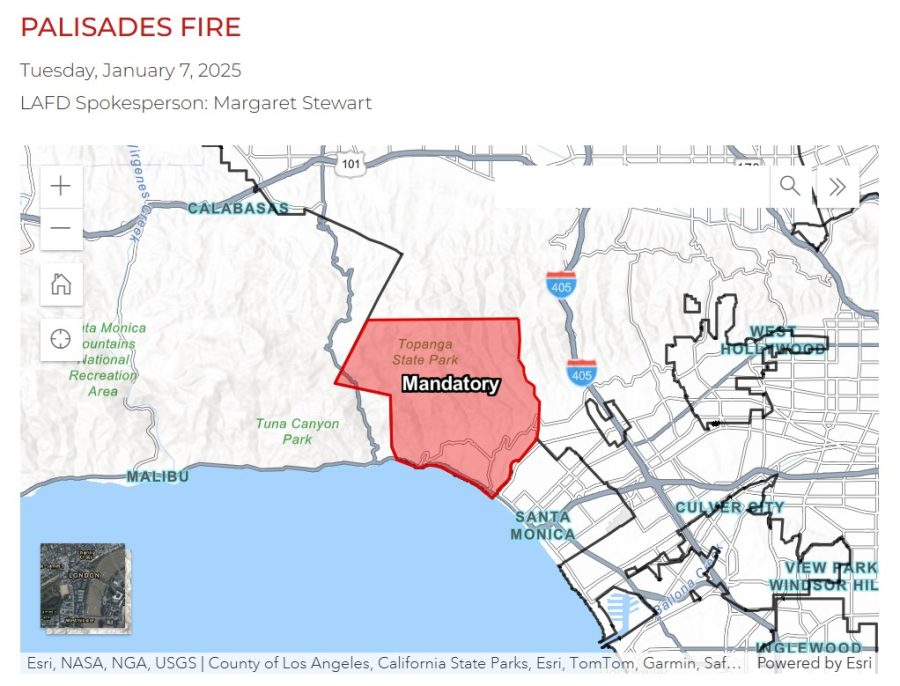As if we didn’t need more evidence of overlapping wildfire seasons, fire activity is competing for headlines with snow and ice warnings in both northern and southern hemispheres around the globe.
Today a fast-moving fire is threatening residents in the Pacific Palisades area of Los Angeles and has closed parts of the Pacific Coast Highway between Malibu and Santa Monica. The situation is developing fast with the Los Angeles Fire Department issuing mandatory evacuation orders and traffic alerts:

Wildfires in January are not unprecedented in southern California and only last month the Franklin Fire burned more than 4000 acres around Malibu.
The National Weather Service warned on 7 January of Extremely Critical Fire Weather in Southern California with high winds around the mountains and foothills:
High winds and low relative humidity will produce critical to extremely critical fire weather in southern California through Thursday.
Critical fire weather conditions and damaging downslope winds expected through Thursday across portions of Southern California with extremely critical fire weather likely for parts of Los Angeles and Ventura counties on Wednesday…
A Particularly Dangerous Situation is expected for the highlighted portion of our area from 7AM – 1PM on Wednesday. Very strong gusts and low relative humidity will allow any fires that develop to spread VERY rapidly! Wind damage including downed trees expected in some spots! pic.twitter.com/cL0Ct4ZeR5
— NWS San Diego (@NWSSanDiego) January 7, 2025
California Governor Gavin Newsom said on Monday that these could be some of the worst fire conditions the region had seen for many years with the wind forecast combined with the extremely dry conditions with low humidity.
Meanwhile after three weeks and a disrupted Christmas, the long-running bushfire in the Grampians (Gariwerd) National Park in Victoria Australia is now contained. The fire began on 17 December after dry lightning started multiple fires in the southern part of the national park.
With a fire footprint circumference of 262 miles (422 kms), more than 188,000 acres (76,000 hectares) of national park and agricultural land was burned with smoke covering most of south-west Victoria and parts of Melbourne.
With most of fire in dense forest property losses were relatively small and there were no serious personal injuries. Early data indicates livestock losses include 775 sheep, one horse, one beef cattle and 1,285 beehives, plus 335 miles (540 kms) of fencing.
New South Wales this week contended with more than 70 fire outbreaks across the state, many started by lightning strikes as summer storms passed over. The firegrounds are now seeing welcome rain. Earlier, the New South Wales Rural Fire Service showed how to get the water to a dry fireground:
A multi-agency firefighting effort continues as crews work to contain several fires burning in isolated bushland throughout the Hunter Valley. Due to their remoteness, bulk water tankers from the #RFS & contractors are moving a staggering 1.2 million litres of water each day. pic.twitter.com/OglNDPT9Pj
— NSW RFS (@NSWRFS) January 6, 2025

